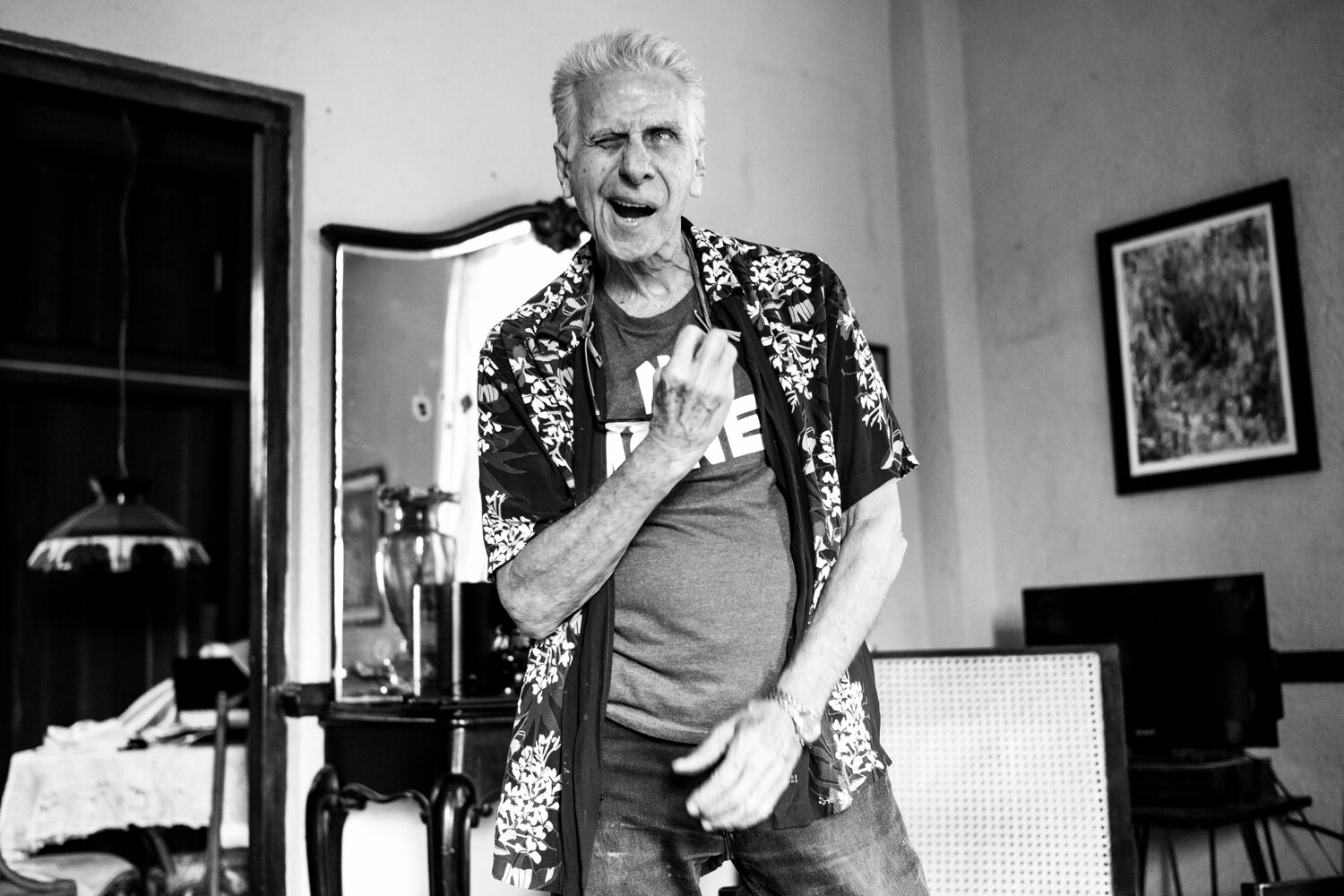Mucho Gusto, Bobby Carcassés!
Who is Bobby Carcassés, you ask? One might be forgiven for asking this question in many parts of the world. But in Cuba, especially if one is even tenuously drawn towards jazz, such a question is akin to asking who Frank Sinatra is in the United States.
But alas, I did ask. “Trumpeter, pianist, conguero, painter, composer, singer, educator, and the greatest showman of Cuba,” explained one of the Producers of the Havana Jazz Festival, as I managed to catch the tail end of this year’s festival. In fact, Bobby Carcassés, along with Chucho Valdés and Paquito D’Rivera amongst a few others, founded the Jazz Plaza Festival in 1979, which later evolved into the Havana International Jazz Festival. In “post-revolution” Cuba, where jazz (allegedly a CIA ploy) was increasingly curbed by an anti-U.S. government, Valdés and D’Rivera left for American shores, gaining international recognition over time, including winning six and fourteen Grammys respectively.
Bobby stayed back. He organized his music and developed his uniquely accented style, shaping contemporary Latin Jazz and its neoteric sounds in Cuba — a heritage spanning over 60 years. Yet, a significant part of Bobby’s legacy will comprise of not just his music but of those he has taught and mentored — think of Dafnis Prieto, Manuel Valera, Yosvany Terry, and Yunior Terry, all creating waves in the New York jazz arena today.
© Ayash Basu, 2020. Bobby Carcassés in the midst of demonstrating a pantomime from one of his evergreen hits that he remises even today. He has done it all from opera, zarzeula, theater, radio, to orchestra, cabaret, jazz, and cinema.
My first brief encounter with Bobby took place as he was receiving an honor at the Havana Jazz Festival, probably a routine occurrence for him after all that he has accomplished. He shook my hands, gathered I was an American “yuma” originally from India, and extended an invitation to his home to talk further, an opportunity I would latch on to with both hands. Three days later, I was in his living room for an afternoon of espresso and conversation, but mostly to be schooled on the evolution of Jazz in Cuba.
I asked him how he got his name, suggesting that “Bobby” is an unusual name in Cuba. He talked about his birth in Kingston, Jamaica in 1938, where his grandfather was a Diplomat. He returned to Cuba at age four, his given name of “Roberto” anglicized to “Bobby,” and just “went with it.” He is quick to assert that despite his English name, he is 100% Cuban and his is very much a Cuban story. The island, for whose independence his grandfather had fought against the Spaniards in 1895, is his forever home.
© Ayash Basu, 2020. Bobby sips on his espresso and explains the nuances between the African Congo and the Indian Tabla, demonstrating a few beats on the wooden armrests of his chair.
India turned out to be an unexpected but strong connection to channel our conversation further.
Bobby is deeply spiritual and lives by Sri Aurobindo’s teachings. One glance at his apartment walls reveals more than a few dozen sketches, photos, and posters of Sri Aurobindo, Paramhansa Yogananda, Swami Vivekananda, and Mahatma Gandhi. His son, who is named “Aurobindo,” handed me a very old book with manuscripts and photos from late 1800s Calcutta (where I was born) and Pondicherry (where I yearn to go), tracing the journey of a young Sri Aurobindo. Yoga and meditation shape Bobby’s two-hour routine daily before he starts his day.
© Ayash Basu, 2020. Bobby Carcassés instinctively plays a tune at his small studio just big enough to host his instruments and drawing desk. Imprints of Aurobindo, Yogananda, and Gandhi are hard to miss.
Bobby takes me to his small studio, picks up a few of his instruments and plays them all for a few moments — as if to say to them, “Hey, what’s up? I’m around and am just checking up on you.” His studio walls are a living library of Cuban musicians and performers with nostalgia everywhere. After a few minutes, he stops to put down his flugelhorn and turns to his drawing desk. On that wall are pictures of Sri Aurobindo, Gandhi, and to my utter surprise, Lord Krishna. Out of nowhere, Bobby summons a flute and plays a brief devotional track, a tune I recognize but can’t quite remember.
© Ayash Basu, 2020. Bobby Carcassés showing his artistic side, draws up a miniature of one his paintings in real time and offers it to me, a generous gift that I shall cherish forever.
Bobby has performed in and traveled to the United States, Soviet Union, Paris, UK, Panama, Mexico, and Africa amongst other places. But he is firmly rooted in Cuba and has spent his life balancing Afro-Cuban, Latin, and Jazz notes along with his broad histrionics into a beautiful harmony. My afternoon with Bobby comes to an end; he shakes my hand, gives me a hug and we talk about seeing each other again. Hasta pronto Bobby!




